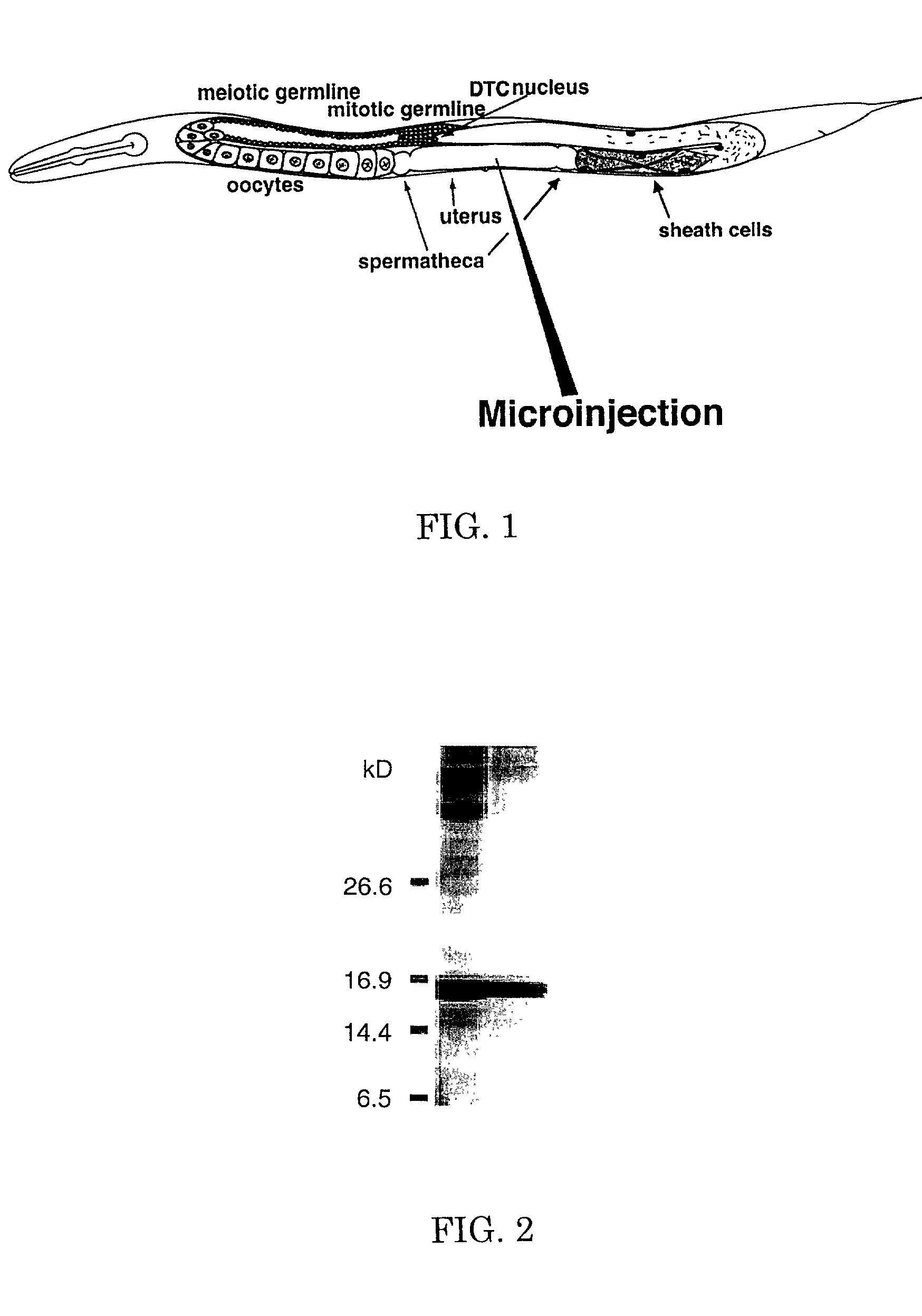Compositions and methods of nematode control
a technology of nematode and composition, applied in the field of composition and methods of nematode control, can solve the problems of reducing the fitness of the organism, nematodes will not readily evolve resistance to compounds or agents, and interfere with nematode fertility, so as to inhibit nematode proliferation and spread, reduce reproductive capacity, and high sequence conservation
- Summary
- Abstract
- Description
- Claims
- Application Information
AI Technical Summary
Benefits of technology
Problems solved by technology
Method used
Image
Examples
example 1
[0166] Large quantities of sperm (generally >108) are purified using a modification of methods developed by Klass and Hirsh (1981). Adult males are identified using synchronized cultures (Lewis and Flemming, 1995) of fog-2(q71), which are 50% male and 50% female. Mutations in the fog-2 gene block spermatogenesis in )XX animals, transforming them into females, but have no effect on XO animals, which are fertile males (Schedl and Kimble, 1988). Males are separated from females, larvae, and embryos based on size by sieving through NITEX screens of various pore sizes. The populations of males isolated in this way are generally >99% pure. To isolate sperm, males are placed between two PLEXIGLASS plates and smashed in a vice grip (The Home Depot, Inc.). Intact sperm are then purified from the carcasses by filtration through NITEX filters (20 micron pore size) and washed in M9 phosphate buffer (Sulston and Hodgkin, 1988) using several rounds of low speed centrifugation (e.g., 10,000 xg) an...
PUM
| Property | Measurement | Unit |
|---|---|---|
| pore size | aaaaa | aaaaa |
| time | aaaaa | aaaaa |
| time | aaaaa | aaaaa |
Abstract
Description
Claims
Application Information
 Login to View More
Login to View More - R&D
- Intellectual Property
- Life Sciences
- Materials
- Tech Scout
- Unparalleled Data Quality
- Higher Quality Content
- 60% Fewer Hallucinations
Browse by: Latest US Patents, China's latest patents, Technical Efficacy Thesaurus, Application Domain, Technology Topic, Popular Technical Reports.
© 2025 PatSnap. All rights reserved.Legal|Privacy policy|Modern Slavery Act Transparency Statement|Sitemap|About US| Contact US: help@patsnap.com



